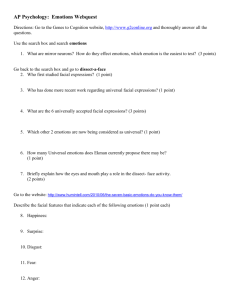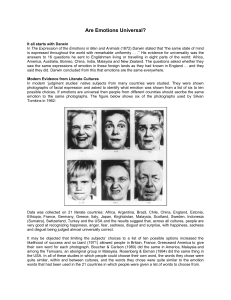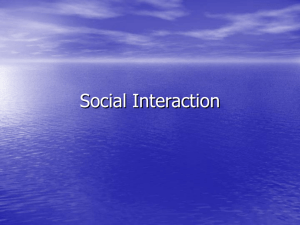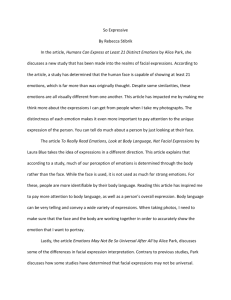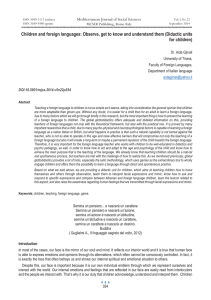File - Topical English Free Lessons
advertisement
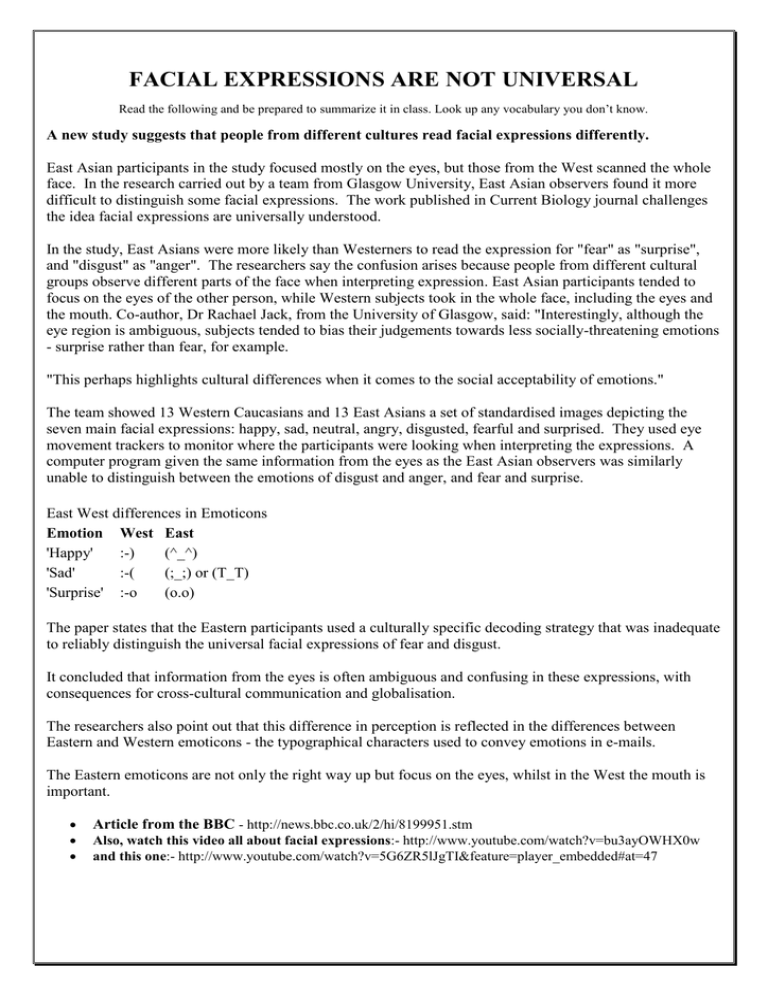
FACIAL EXPRESSIONS ARE NOT UNIVERSAL Read the following and be prepared to summarize it in class. Look up any vocabulary you don’t know. A new study suggests that people from different cultures read facial expressions differently. East Asian participants in the study focused mostly on the eyes, but those from the West scanned the whole face. In the research carried out by a team from Glasgow University, East Asian observers found it more difficult to distinguish some facial expressions. The work published in Current Biology journal challenges the idea facial expressions are universally understood. In the study, East Asians were more likely than Westerners to read the expression for "fear" as "surprise", and "disgust" as "anger". The researchers say the confusion arises because people from different cultural groups observe different parts of the face when interpreting expression. East Asian participants tended to focus on the eyes of the other person, while Western subjects took in the whole face, including the eyes and the mouth. Co-author, Dr Rachael Jack, from the University of Glasgow, said: "Interestingly, although the eye region is ambiguous, subjects tended to bias their judgements towards less socially-threatening emotions - surprise rather than fear, for example. "This perhaps highlights cultural differences when it comes to the social acceptability of emotions." The team showed 13 Western Caucasians and 13 East Asians a set of standardised images depicting the seven main facial expressions: happy, sad, neutral, angry, disgusted, fearful and surprised. They used eye movement trackers to monitor where the participants were looking when interpreting the expressions. A computer program given the same information from the eyes as the East Asian observers was similarly unable to distinguish between the emotions of disgust and anger, and fear and surprise. East West differences in Emoticons Emotion West East 'Happy' :-) (^_^) 'Sad' :-( (;_;) or (T_T) 'Surprise' :-o (o.o) The paper states that the Eastern participants used a culturally specific decoding strategy that was inadequate to reliably distinguish the universal facial expressions of fear and disgust. It concluded that information from the eyes is often ambiguous and confusing in these expressions, with consequences for cross-cultural communication and globalisation. The researchers also point out that this difference in perception is reflected in the differences between Eastern and Western emoticons - the typographical characters used to convey emotions in e-mails. The Eastern emoticons are not only the right way up but focus on the eyes, whilst in the West the mouth is important. Article from the BBC - http://news.bbc.co.uk/2/hi/8199951.stm Also, watch this video all about facial expressions:- http://www.youtube.com/watch?v=bu3ayOWHX0w and this one:- http://www.youtube.com/watch?v=5G6ZR5lJgTI&feature=player_embedded#at=47 With your partner, discuss the following questions. Feel free to ask follow-on questions. 1. What do you think about emoticons? Do you ever use them or are they just irritating? 2. What are some other cultural differences you have noticed between western and oriental cultures? 3. Do you find it difficult to communicate with people from other cultures? What are some of the main problems you have encountered when dealing with foreigners? 4. Have you ever been in an embarrassing situation because of a misunderstanding due to either cultural differences or communication? 5. Is it easy to read other people’s emotions? Are you good at it? Why do you think so? What are they thinking? Look at these pictures of faces with your partner. Choose a few of them to discuss. How do you think they feel? What might they be thinking about? Create a story or scenario that explains the emotional state of each person. Be creative and use your imagination.


